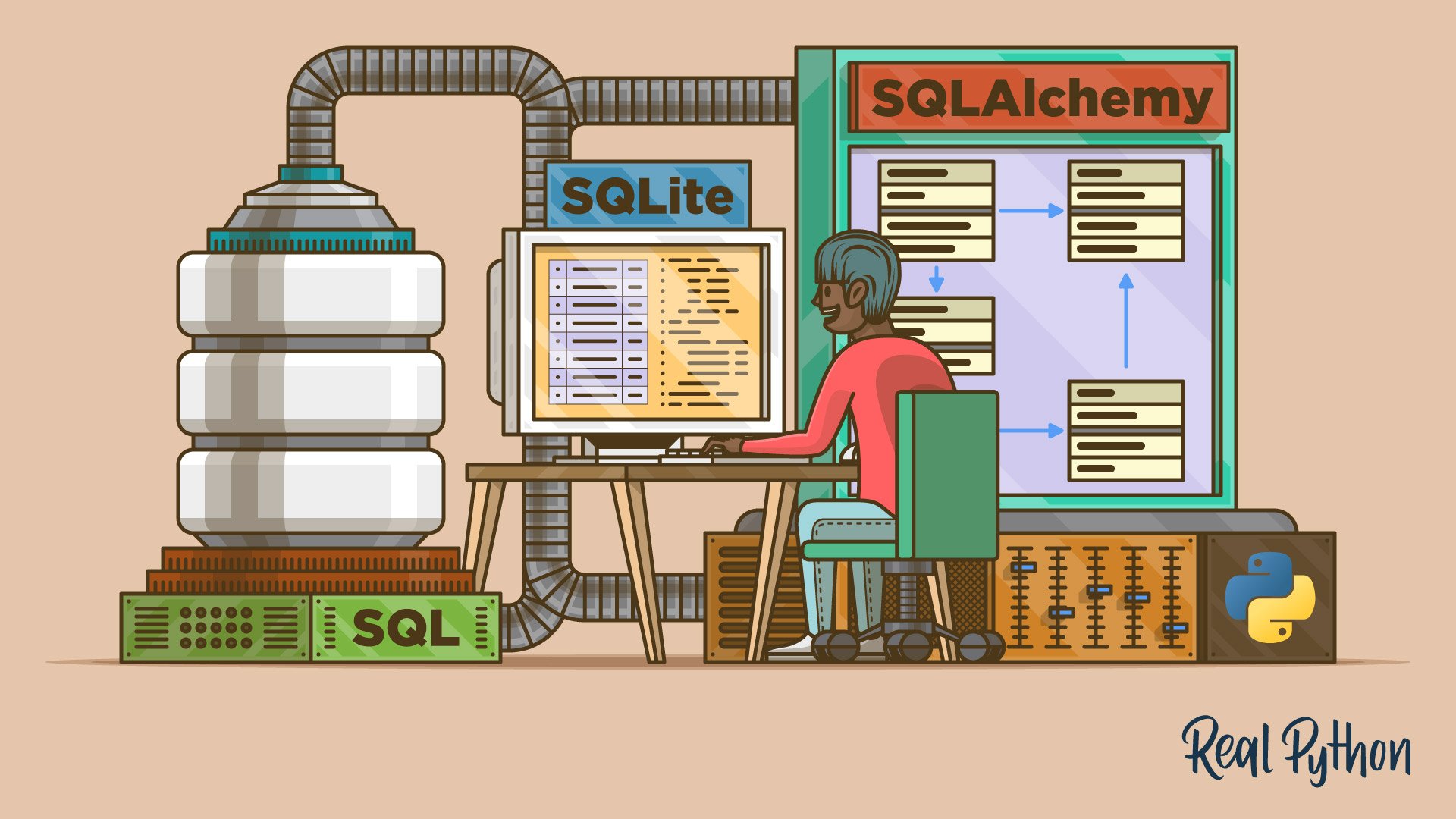sqlite3
The Python sqlite3 module provides an interface for interacting with SQLite databases, which are lightweight, serverless, and self-contained. This module allows you to effortlessly create, manage, and query SQLite databases from Python code.
Here’s a quick example:
>>> import sqlite3
>>> with sqlite3.connect(":memory:") as connection:
... cursor = connection.cursor()
... cursor.execute(
... "CREATE TABLE users (id INTEGER PRIMARY KEY, name TEXT)"
... )
... cursor.execute(
... "INSERT INTO users (name) VALUES ('Alice')"
... )
... connection.commit()
...
Key Features
- Connects to SQLite databases stored in files or in-memory
- Executes SQL queries and fetches results
- Supports transactions and provides a context manager interface
- Allows for the creation of custom SQLite functions in Python
- Supports dictionary-like row access with
sqlite3.Row
Frequently Used Classes and Functions
| Object | Type | Description |
|---|---|---|
sqlite3.connect() |
Function | Connects to an SQLite database |
sqlite3.Connection |
Class | Represents a connection to the database |
sqlite3.Cursor |
Class | Facilitates query execution and result retrieval |
sqlite3.Row |
Class | Provides dictionary-like access to query results |
sqlite3.Error |
Class | Provides a base class for all SQLite exceptions |
sqlite3.executemany() |
Function | Executes the same SQL command for multiple sets of parameters |
Examples
Connecting to an SQLite database and creating a table:
>>> import sqlite3
>>> connection = sqlite3.connect("example.db")
>>> cursor = connection.cursor()
>>> cursor.execute(
... "INSERT INTO users (name) VALUES (?)", ("Bob",)
... )
>>> connection.commit()
Inserting data into a table:
>>> cursor.execute(
... "INSERT INTO users (name) VALUES (?)", ("Bob",)
... )
>>> connection.commit()
Querying data from a table:
>>> cursor.execute("SELECT * FROM users")
>>> cursor.fetchall()
[(1, 'Bob')]
Handling errors and transactions:
>>> try:
... connection = sqlite3.connect("example.db")
... cursor = connection.cursor()
... cursor.execute(
... "INSERT INTO users (name) VALUES (?)", (None,)
... )
... connection.commit()
>>> except sqlite3.Error as e:
... print("An error occurred:", e)
... connection.rollback()
...
Using executemany() to insert multiple rows:
>>> users = [("Carol",), ("Dave",), ("Eve",)]
>>> cursor.executemany(
... "INSERT INTO users (name) VALUES (?)", users
... )
>>> connection.commit()
>>> cursor.execute("SELECT * FROM users")
>>> cursor.fetchall()
[(1, 'Bob'), (2, 'Carol'), (3, 'Dave'), (4, 'Eve')]
>>> connection.close()
Common Use Cases
- Storing application data in a local database
- Prototyping and testing SQL queries
- Creating lightweight, portable data storage solutions
Real-World Example
Suppose you want to manage a contact list. You can use the sqlite3 module to create a database, add contacts, and retrieve them quickly:
database.py
import sqlite3
def init_db(connection):
cursor = connection.cursor()
cursor.execute(
"CREATE TABLE IF NOT EXISTS contacts ("
"id INTEGER PRIMARY KEY, name TEXT, email TEXT)"
)
connection.commit()
def add_contacts(connection):
cursor = connection.cursor()
cursor.execute(
"INSERT INTO contacts (name, email) VALUES (?, ?)",
("Alice", "alice@example.com")
)
cursor.execute(
"INSERT INTO contacts (name, email) VALUES (?, ?)",
("Bob", "bob@example.com")
)
connection.commit()
def display_contacts(connection):
cursor = connection.cursor()
cursor.execute("SELECT * FROM contacts")
print(cursor.fetchall())
def main():
with sqlite3.connect("contacts.db") as connection:
init_db(connection)
add_contacts(connection)
display_contacts(connection)
if __name__ == "__main__":
main()
This example demonstrates how the sqlite3 module can be used to store and manage contact information in a local SQLite database.
Related Resources
Tutorial
Data Management With Python, SQLite, and SQLAlchemy
In this tutorial, you'll learn how to store and retrieve data using Python, SQLite, and SQLAlchemy as well as with flat files. Using SQLite with Python brings with it the additional benefit of accessing data with SQL. By adding SQLAlchemy, you can work with data in terms of objects and methods.
For additional information on related topics, take a look at the following resources:
By Leodanis Pozo Ramos • Updated July 18, 2025

